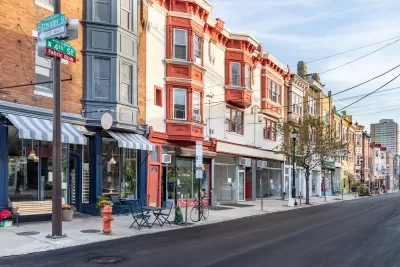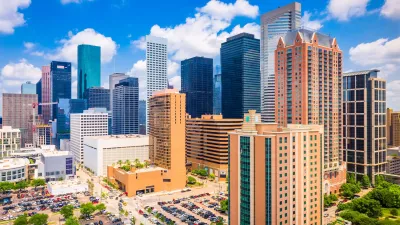As the cost of building new housing rises, mechanisms that support the purchase of existing housing by local governments and housing authorities can help mitigate the housing crisis and create affordable housing faster than new construction.

In a piece in The Philadelphia Citizen, Diana Lind argues that the most cost-effective way to create more affordable housing is to buy existing housing stock.
This concept grew in popularity during the pandemic, when cities started looking to hotels and other underused properties as potential sources of affordable housing stock. California’s Project Homekey, for example, added or preserved 12,500 affordable housing units in the state.
“Seeing these advantages, some forward-thinking municipal governments have sought to make it even easier to get their hands on property, through an option to have a right of first refusal on multifamily properties.” Lind explains the approach, which gives local governments, affordable housing providers, and/or residents the right to make the first purchase offer on a multifamily property that comes up for sale. For example, “Philadelphia passed a ‘People’s Preservation Package’ earlier this year which would give the city, tenants and affordable housing providers 45 days to make an offer on expiring federally subsidized housing before the property is offered to the market.”
In Lind’s opinion, “While nonprofits with specific needs will continue to build new tax credit subsidized affordable housing, city entities should focus on buying and preserving naturally occurring affordable housing when possible.”
FULL STORY: The Best Way To Build Affordable Housing … is to buy it.

Planetizen Federal Action Tracker
A weekly monitor of how Trump’s orders and actions are impacting planners and planning in America.

Congressman Proposes Bill to Rename DC Metro “Trump Train”
The Make Autorail Great Again Act would withhold federal funding to the system until the Washington Metropolitan Area Transit Authority (WMATA), rebrands as the Washington Metropolitan Authority for Greater Access (WMAGA).

The Simple Legislative Tool Transforming Vacant Downtowns
In California, Michigan and Georgia, an easy win is bringing dollars — and delight — back to city centers.

Albuquerque’s Microtransit: A Planner’s Answer to Food Access Gaps
New microtransit vans in Albuquerque aim to close food access gaps by linking low-income areas to grocery stores, cutting travel times by 30 percent and offering planners a scalable model for equity-focused transit.

This City Will Pay You to Meet Your Neighbors
A North Kansas City grant program offers up to $400 for residents to throw neighborhood block parties.

Commentary: Our Silence Will Not Protect Us
Keeping our heads down and our language inoffensive is not the right response to the times we’re in. Solidarity and courage is.
Urban Design for Planners 1: Software Tools
This six-course series explores essential urban design concepts using open source software and equips planners with the tools they need to participate fully in the urban design process.
Planning for Universal Design
Learn the tools for implementing Universal Design in planning regulations.
Smith Gee Studio
City of Charlotte
City of Camden Redevelopment Agency
City of Astoria
Transportation Research & Education Center (TREC) at Portland State University
US High Speed Rail Association
City of Camden Redevelopment Agency
Municipality of Princeton (NJ)





























